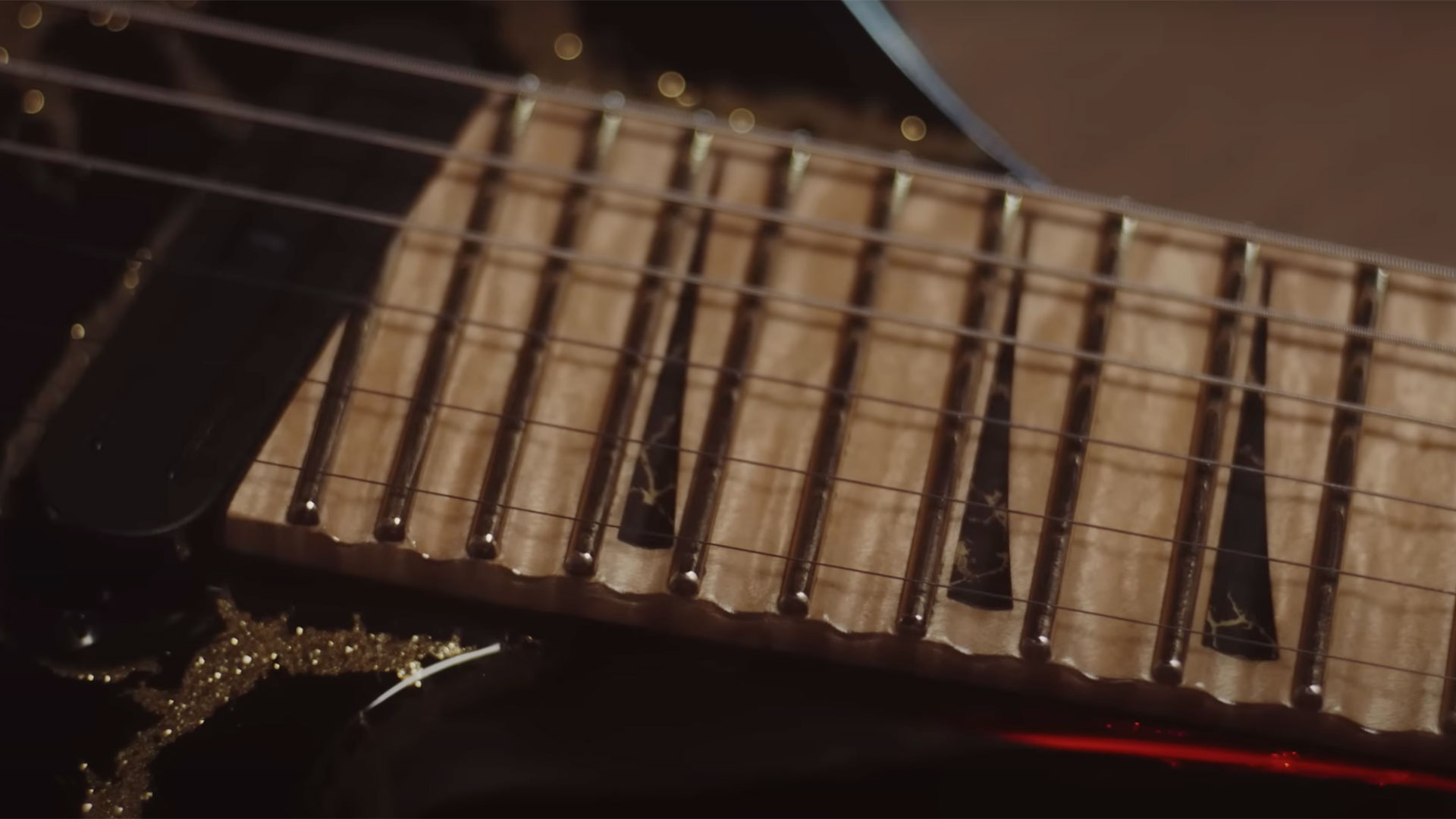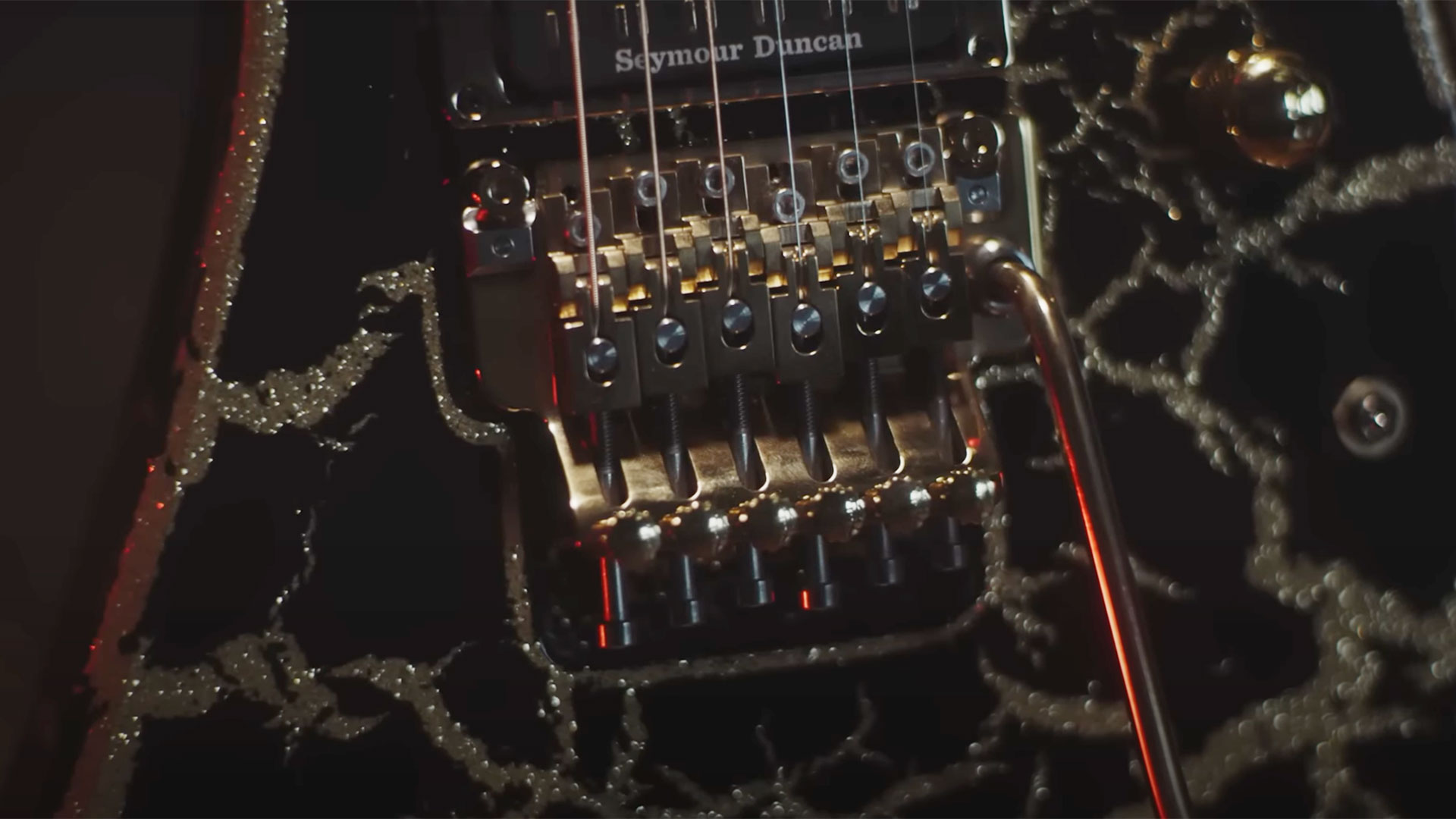Brandon Ellis laid down the gauntlet to Jackson’s Master Builders with this 27-fret Gold Crackle Kelly – is this one of the most challenging custom builds ever made?
See the latest guitar borne from the friendship between one of heavy music’s most innovative players and Jackson’s metal-obsessed master builder, Joe Williams
Jackson has just launched a new YouTube series, Nightmare Machines, in which it documents some of the firm’s most mind-blowing custom-made electric guitars – and first up is this 27-fret Gold Crackle Kelly build for The Black Dahlia Murder guitarist Brandon Ellis.
While your eye is caught straight away by the stunning finish, there’s a wealth of forward-thinking features packed into the instrument’s construction – among them, a 27-fret fingerboard, a Huntag titanium locking tremolo, Schaller locking gold tuners and a Jackson PC-1 Sustainer neck pickup – and that's barely scratching the surface.
Combining them all took a skilled hand – or rather a pair of them, attached to Jackson Custom Shop masterbuilder Joe Williams.
“When we started talking about it and Brandon was throwing out all of these specs, I wasn’t sure,” admits Williams in the clip. “Now that it’s all done, it’s gorgeous. I can’t walk down the hallway without people stopping me and saying, ‘What is that!?’”

In the clip, the Jackson man explains that just getting the neck to the right size was a challenge as the thickness of the paint required for a finish that combined metal flake and crackle effects would alter the final measurements.
The neck and maple fretboard, in particular, are worthy of closer attention. On top of that 27-fret ‘board (beautifully angled to snugly meet the offset neck pickup), there’s a 14-16” compound radius and frets 15 to 27 have been scalloped. What’s more, the crackle style fret markers are actually a finely cut reconstituted stone, inlaid on the maple.

On top of all this, Ellis spec’d a tricky flame maple binding to continue around the headstock. Given the material is prized for its rigidity, we wouldn’t fancy the task of bending it around a pointy Jackson headstock, but Williams has made it look superb here.
Get The Pick Newsletter
All the latest guitar news, interviews, lessons, reviews, deals and more, direct to your inbox!
On the electronics side, Ellis spec’d the Seymour Duncan Parallel Axis humbucker in the bridge, which uses parallel dual-pole pieces under each string. The PC-1 Sustainer in the neck is mainly for studio use. Williams says it’s “hardwired for maximum intensity” and is activated by pulling out the volume control.
Finally, there’s a Scahller Sure Claw spring tensioner in the rear, allowing for quick adjustments of the tremolo system’s spring tension, without removing the rear panel.
Ellis and Williams have been frequent collaborators – this being the Black Dahlia man’s third custom shop build – and it’s fair to say the former really laid down the gauntlet with this one. However, it seems Ellis – like the rest of us – has been blown away by the result of Williams’ labors.

“It’s one of the greatest honors of my life to work with the guy and call him my friend,” says Ellis. “This guitar is so insane, it’s my prized possession and I’m so proud of how it turned out. I love this thing to pieces.
“I don’t even think of it like I designed this guitar. It’s like it was out there, it existed, and I found it and I brought the idea into real life – that’s honestly how it feels.”
You can view the full Nightmare Machines clip above, and keep an eye on Jackson’s YouTube channel for more episodes in the series.
In the meantime, for another forward-thinking (albeit less exclusive) Jackson build, check out this seven-string Rhoads signature for Suicide Silence guitarist Mark Heylmun.

Matt is Deputy Editor for GuitarWorld.com. Before that he spent 10 years as a freelance music journalist, interviewing artists for the likes of Total Guitar, Guitarist, Guitar World, MusicRadar, NME.com, DJ Mag and Electronic Sound. In 2020, he launched CreativeMoney.co.uk, which aims to share the ideas that make creative lifestyles more sustainable. He plays guitar, but should not be allowed near your delay pedals.
“It holds its own purely as a playable guitar. It’s really cool for the traveling musician – you can bring it on a flight and it fits beneath the seat”: Why Steve Stevens put his name to a foldable guitar
“Finely tuned instruments with effortless playability and one of the best vibratos there is”: PRS Standard 24 Satin and S2 Standard 24 Satin review










